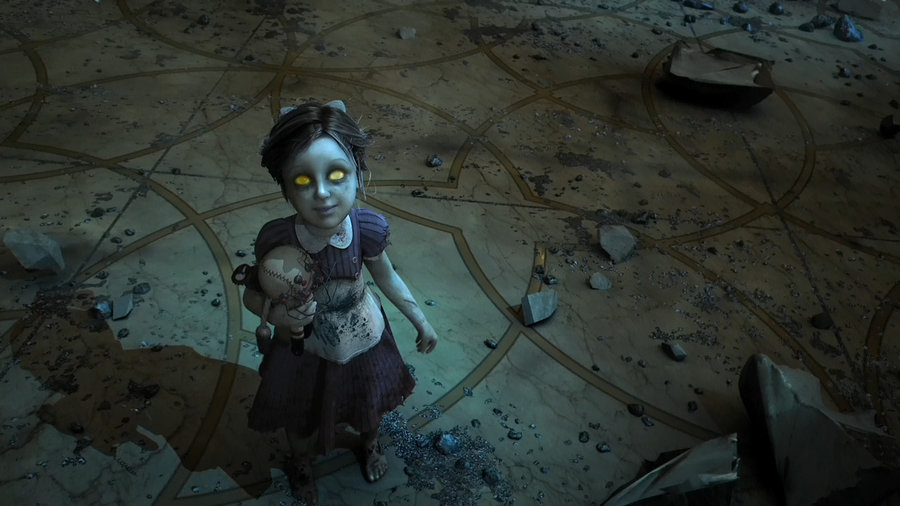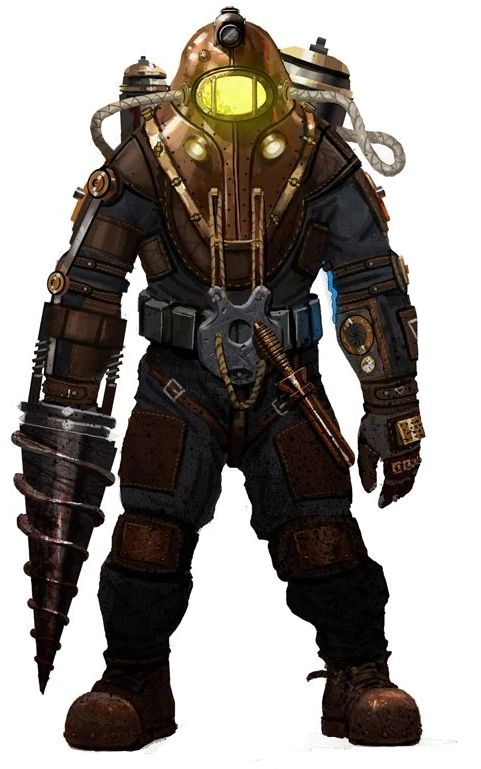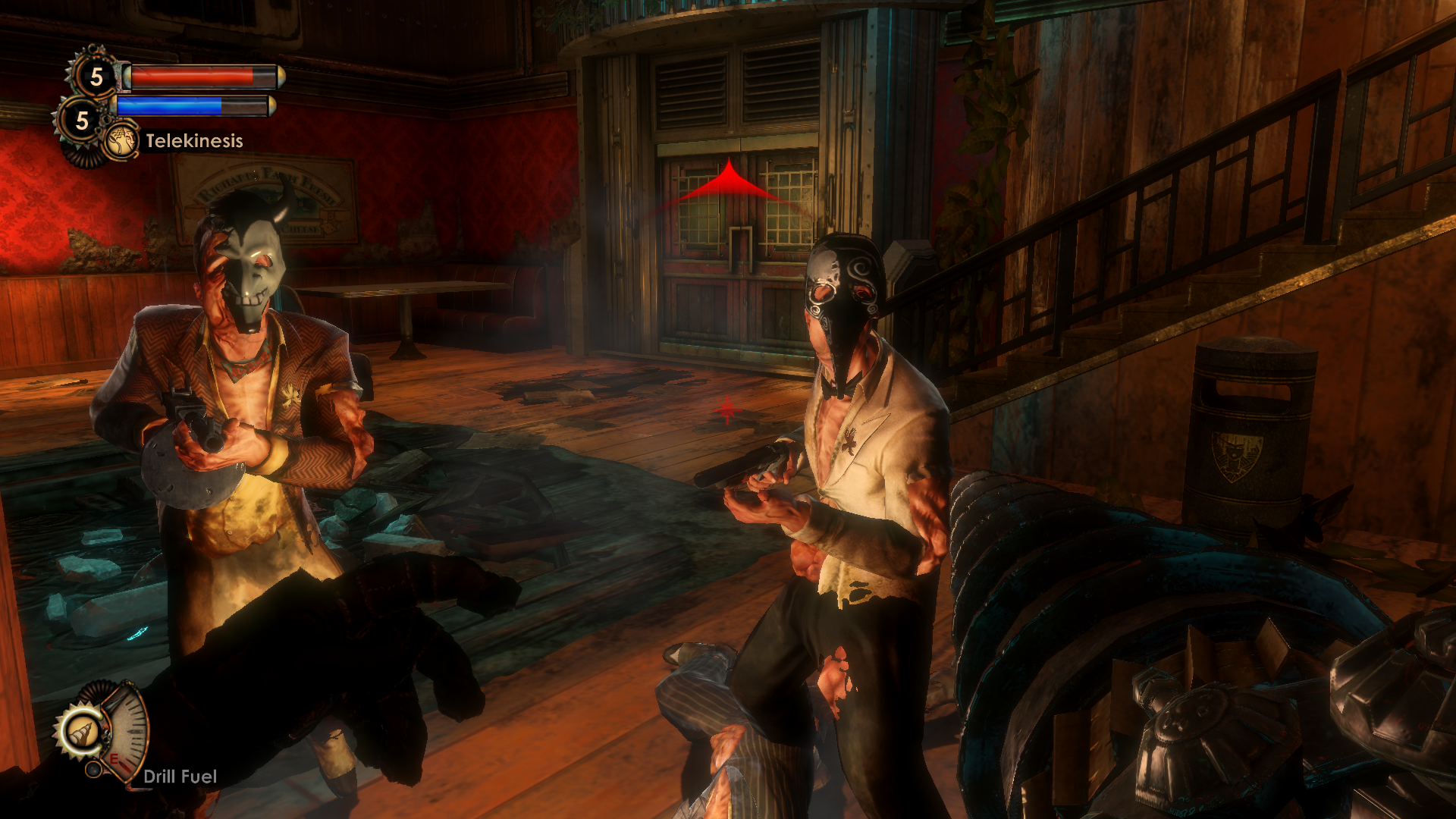One aspect of Bioshock that I feel the developers excelled at is environmental storytelling, as discussed by Henry Jenkins in his “Game Design As Narrative Architecture”. Although Bioshock certainly contains strong narrative elements present in the dialogue and progression of gameplay/gamic goals, there is very little initial information that the player has about what is going on in Rapture beyond the clues they have in the virtual environment. Despite this, the player is able to use the clues around them to infer what kind of situation they are in and the progression of the game creates a smooth narrative flow with the nature of Rapture and the player’s surroundings becoming uncovered as they move through the game. The ways in which water and destroyed environments are used is very effective at this, with the sense that nature is taking its course and reclaiming Rapture from humans. There is also a sense throughout the game that Rapture was a project that never should have been conducted, that it goes against nature and is fundamentally wrong. The environment is dark and overrun with criminals, science experiments gone wrong, and insane people. There are lots of instances of broken furniture and machinery littered around the environment, creating a strong sense that the player is traversing through some sort of haunted house 1950s-inspired version of Atlantis. Through the initial elevator sequence alone, the player is able to get a fairly good grasp of the nature of Rapture and what kind of environment the game will be set in. The music and sound design strongly add to this environment, with shrieks and odd scraping sounds permeating the environment from unknown but seemingly nearby locations. The water covering almost everything in Rapture adds a unique element to the lighting, with reflections being cast from small pools of water or shine added to objects from their wetness. This creates even more dramatic lighting than the broken and patchy initial lighting causes, and when supplemented with the gaudy neon signs in some of the levels the lighting becomes a very strong element of the game environment.
Narrative Architecture in Bioshock
One aspect of Bioshock that I feel the developers excelled at is environmental storytelling, as discussed by Henry Jenkins in his “Game Design As Narrative Architecture”. Although Bioshock certainly contains strong narrative elements present in the dialogue and progression of gameplay/gamic goals, there is very little initial information that the player has about what is… Continue reading Narrative Architecture in Bioshock![]()




